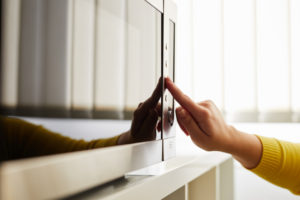 Do you know what areas in the office with the most germs? Your cubicle may be cleaner than you think, but here are 4 other places you may want to be aware of.
Do you know what areas in the office with the most germs? Your cubicle may be cleaner than you think, but here are 4 other places you may want to be aware of.
From keyboards and computer mice to mobile phones and photocopier buttons, here’s everything you need to know about the germy spots in your office and how to clean them effectively without contaminating other areas of your workspace.
Germiest Spot #1 – Meeting Rooms
Meeting rooms are often the germiest spots in an office and need to be cleaned every day. More people than any other room typically attend meeting rooms, so they’re an excellent place to start when cleaning your office. Here are some tips for making sure your meeting room is clean:
- Make sure you wipe down the seating area, walls, and tables before and after each meeting.
- Use antibacterial wipes to remove dirt from surfaces, doorknobs, etc.
- Get creative with this task! For example, bring some floor mats and move them from room to room or between buildings if possible.
- Always keep sanitizer bottles handy at every entrance. Having these will cut back on how much time you spend disinfecting, because it’s mportant to stay healthy.
- Place signs around the office reminding employees not to bring food into meeting rooms. The old saying, “out of sight, out of mind,” applies here. If it’s not there, it won’t tempt anyone, and no one will bring food into the room, even if their mouth is watering over donuts at reception.
Germiest Spot #2 – Kitchen
If you’re lucky enough to have an in-office kitchen, it’s one of the germiest spots in your office. The best way to clean it is with a bleach or disinfectant solution and a mop or cleaning cloth.
- Put on gloves before scrubbing down surfaces and then rinse them off afterward. You can use disposable paper towels for this as well.
- Empty the garbage regularly and keep fresh fruit out of the area so it doesn’t attract fruit flies that carry bacteria around your space.
- Remove all uneaten food from lunch dishes and put them away after each meal. When cooking, ensure that all pots are fully submerged under water, not just sitting on the stovetop. Food particles can drop into the water and then be carried throughout the kitchen by steam during cooking.
- To avoid spreading germs, don’t share any food or utensils with other employees.
- Ensure everything has been sanitized adequately before putting anything back on the shelf.
- Have a dedicated washing station in your kitchen where people can clean their hands if they need to prepare food.
- Keep antibacterial wipes handy for those who forget to wash their hands when they leave the kitchen. Stay diligent about keeping the sink filled with hot, soapy water to promote good hygiene habits among employees.
- Remove trash bins from the kitchen if possible because rodents like mice are attracted to food smells and will chew through plastic bags, contaminating what’s inside.
Germiest Spot # 3-Restroom Hand Dryers
Restroom hand dryers are a prime spot for germs, especially considering how often we use them. They blast aerosolized bacteria and viruses all over the place, so it’s best to dry your hands with a paper towel before you go anywhere near one.
Spray down the machine with disinfectant cleaner regularly or buy a specialized germ killing cleaner Sanitizing wipes have been shown to kill 99.9% of disease-causing organisms, including MRSA, Salmonella, E. coli, and many others.
Dryers can become breeding grounds for dangerous microorganisms because each time someone touches them, there’s the potential for cross-contamination. For example, outside a public restroom, a dryer may not look very dirty, but once you remove the nozzle covers, you’ll see dried droplets of sweat and spit everywhere—not appetizing!
Germiest Spot #4 – Locker Room
If you have one, locker rooms are a good place to swap around your clothes and shoes, and they’re also where people go to take their coats off after a long day at work. However, locker rooms can be breeding grounds for all sorts of germs and bacteria, so it’s important to keep them clean by regularly wiping down surfaces with bleach-based wipes.
In addition, it would be best to try not to wear any exposed skin-like necklaces or watches-when you enter the locker room, as these items will collect dirt over time. If no lockers are available, hang up your coat and tie up your shoes before storing them in another location until you need to use them again. If only one sink is available, designate one person per shift who will wash their hands before exiting the locker room—this reduces hand contamination that might occur when someone touches various door handles, etc., as they leave. Lastly, make sure everyone knows how to properly get rid of dirty towels. Don’t just throw them on the floor or in a bin.
Best cleaning solution
Let Grandmother’s Touch help keep your property safe, hygienic, and welcoming. We use eco-friendly products that are safe for children and pets. Our staff members are trained in the latest cleaning techniques to ensure your property is free of germs and dirt from top to bottom.
We offer a wide variety of convenient commercial cleaning, maintenance, and restoration services to ensure that your building is always sparkling clean. Whether you need a one-time emergency service or weekly routine commercial office cleaning in Toronto, our team is committed to providing our clients friendly, detail-oriented service. Contact us for a quote today.

